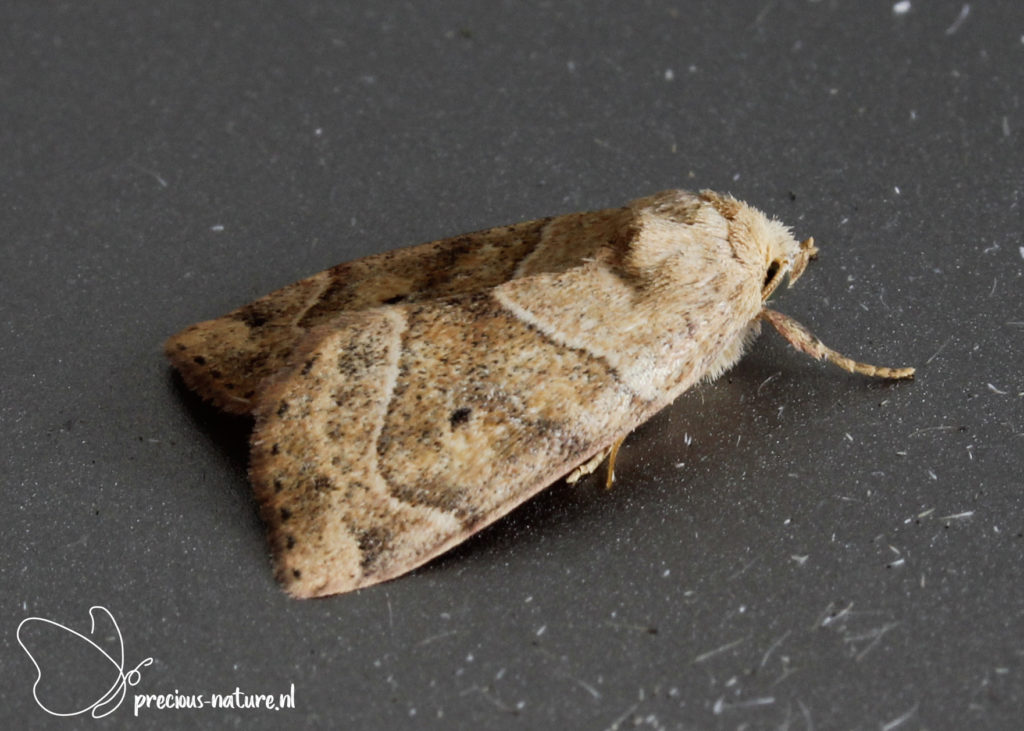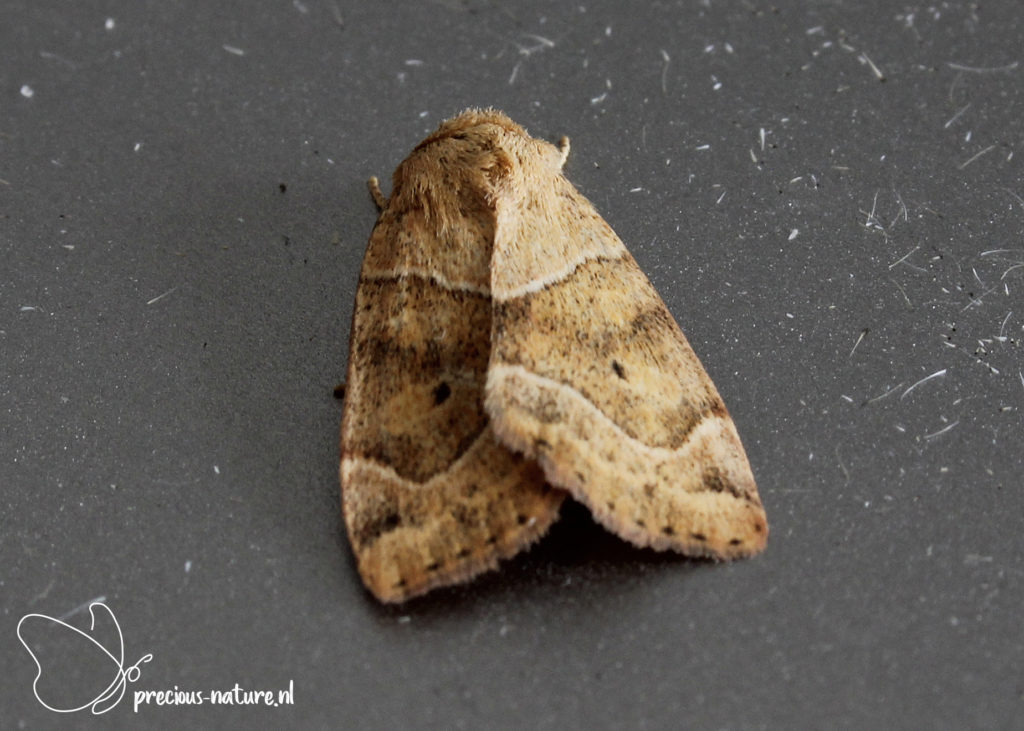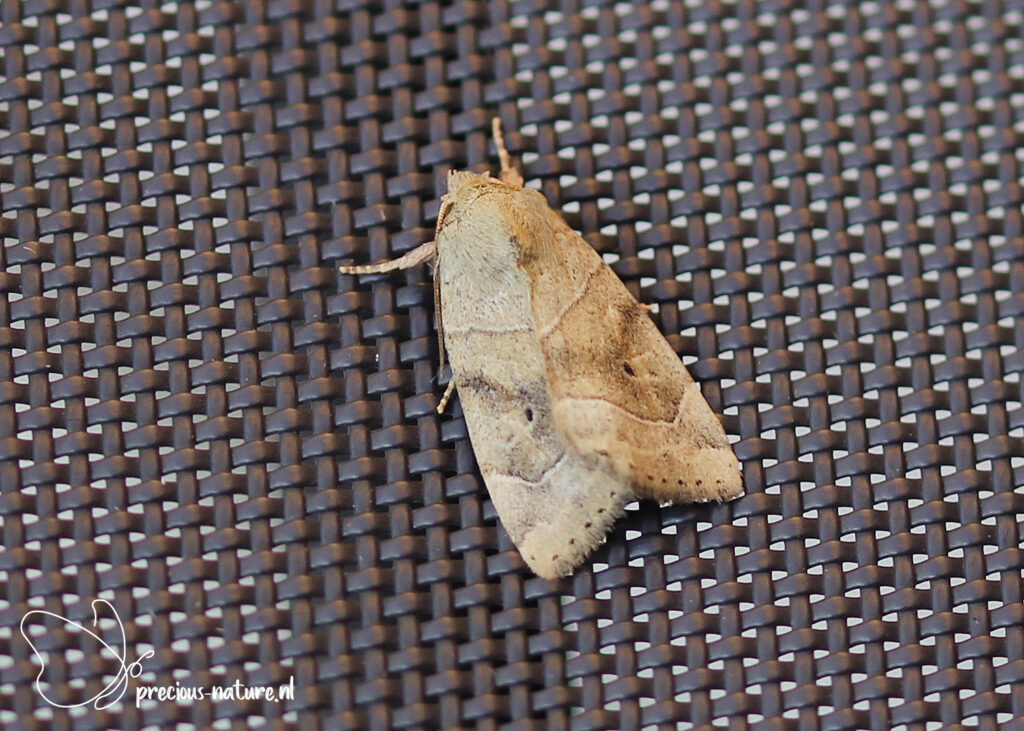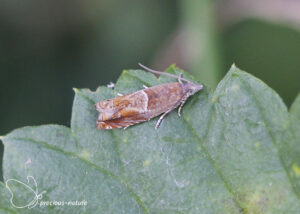Ipimorphinae is a subfamily of the Owlet Moths (Noctuidae). It is a fairly small subfamily with the genera Balsa, Cosmia, and Eupsilia.
Genus: Cosmia
The Dun-bar – 2011 (NL)
(NCBI-index: 116126)
The Dun-bar (Cosmia trapezina) has a diagonal transverse line on the forewing that runs from the costa to the dorsum. The post-median line runs from the costa at an acute angle to the dorsum. In the resting position, it, therefore, seems as if a ‘V’ is drawn on the wings. The kidney mark is visible through the black dot that is present in it. Some specimens are light-coloured, while the band between the two cross lines is very dark-coloured. It flies in one generation from June to October, and the wingspan is 25-33 mm. Host plant: Oak, Birch, Elm, Blackthorn, Hawthorn, Hazel, Willow, Poplar. Dutch name: Hyena. Frisian name: Hyenaûltsje.
Flying period:

Genus: Cosmia
Lunar-spotted Pinion – 2023 (BE)
(NCBI-index: 987909)
The most striking feature of the Lunar-spotted Pinion (Cosmia pyralina) is the whitish-pink crescent-shaped spot along the leading edge of the forewing near the wing tip. Because of its often pink and soft purple colour, this spot is somewhat reminiscent of a rose petal. The brown wings have a reddish-brown transverse band, with the inner transverse line being dark and serrated. The outer transverse line is slightly edged and arcs away from the leading edge. The lack of a ring spot with a dark centre is the main distinguishing feature in comparison to the Lesser-spotted Pinion (Cosmia affinis). The Lesser-spotted Pinion also has fairly large, sharply defined white spots along the leading edge and lacks the crescent-shaped spot at the wing tip. The flight period spans one generation, from early June to mid-August, and the wingspan ranges from 29 to 34 mm. Host plant: Hawthorn, Blackthorn, Apple, Elm. Dutch name: Maanuiltje. Frisian name: –
Flying period:









